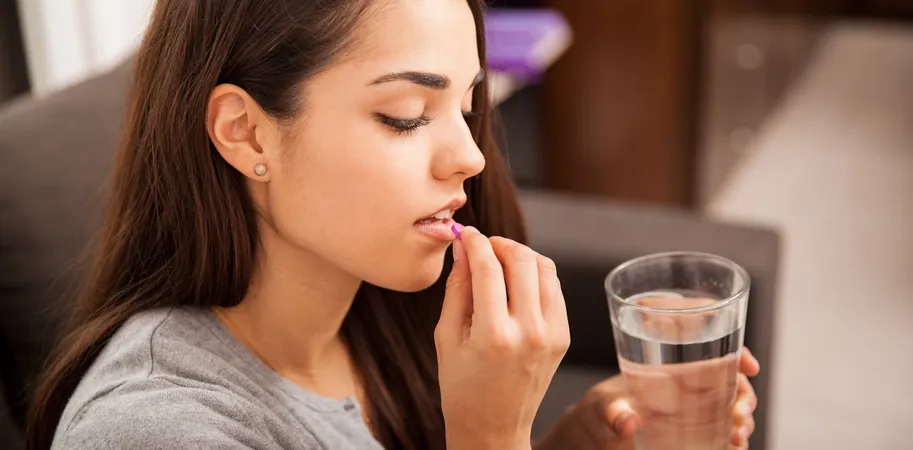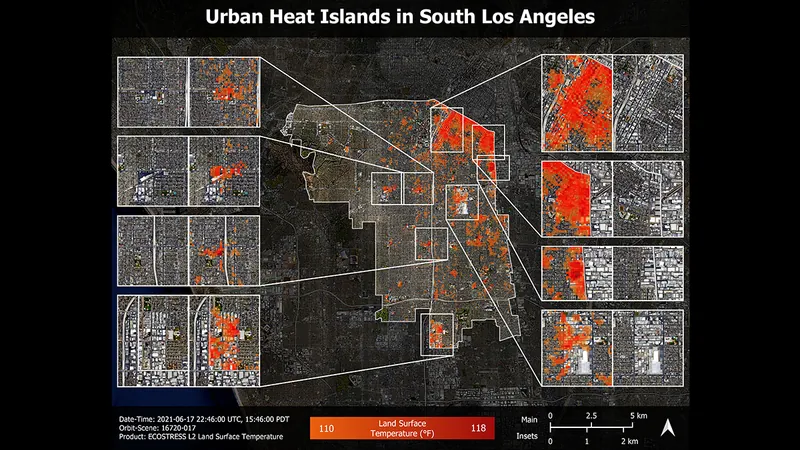
Could Antihistamines Be the Secret to Easing PMDD Symptoms? Here’s What You Need to Know!
2025-04-09
Author: Li
The Latest Buzz on PMDD and Antihistamines
Social media is lighting up with women sharing incredible stories about how common antihistamines, typically used for allergies and heartburn, have become their go-to solution for battling the debilitating symptoms of premenstrual dysphoric disorder (PMDD). But is there any scientific backing to these claims?
Understanding PMDD: The Hidden Struggle
Premenstrual dysphoric disorder is no ordinary PMS; it's a serious condition that wreaks havoc in the week or two leading up to menstruation. With symptoms ranging from debilitating migraines and insomnia to emotional rollercoasters of rage, anxiety, and overwhelming low moods, PMDD doesn’t just affect women physically – it can profoundly disrupt their personal, social, and professional lives. Shockingly, women's risk of suicide can increase up to sevenfold due to the intense mood disturbances associated with PMDD.
The Silent Epidemic
Affecting 3-8% of women worldwide, PMDD remains drastically under-diagnosed, with many suffering for years before receiving the help they need. While experts continue to investigate its complex causes, they suspect a mix of genetic, hormonal, and neurological factors play a role.
The Hormonal Connection
One major theory points to hormonal fluctuations, particularly estrogen, which wreak havoc on levels of serotonin, often dubbed the 'happy hormone'. This fluctuation might explain why medications like selective serotonin reuptake inhibitors (SSRIs) are sometimes effective. Another angle of investigation looks at the role of allopregnenalone, a progesterone breakdown product that typically soothes anxiety by stimulating GABA levels in the brain.
Could Histamine Be the Missing Link?
Emerging discussions on social media suggest that high histamine levels might be a key player in PMDD symptoms. Histamine, a natural body chemical essential for multiple functions, including inflammation and hormone regulation, may see its activity increase during the menstrual cycle, particularly as estrogen levels rise.
Some studies hint that elevated estrogen might trigger immune cells to release more histamine, potentially explaining why some women with PMDD experience heightened symptoms. This theory could also elucidate why antihistamines, which block histamine effects, might yield relief.
The Controversy Continues
Despite this intriguing possibility, mainstream medicine has yet to fully embrace theories surrounding histamine intolerance and estrogen dominance as they pertain to PMDD. Currently, there are no clinical studies directly linking these elements to PMDD or substantiating the efficacy of antihistamines for symptom relief.
A Glimmer of Hope?
Still, countless women report positive experiences when using antihistamines or famotidine—another medication that inhibits histamine activity in the stomach—to combat PMDD symptoms. Although there’s no research backing their effectiveness just yet, the anecdotal evidence continues to grow. Additionally, simple lifestyle changes like adopting an anti-inflammatory diet, regular exercise, and engaging in cognitive therapies have been shown to bring some comfort to those grappling with PMDD.
In Search of Solutions
As the conversation around PMDD and potential treatments unfolds, women are desperate for answers. While social media buzz may inspire hope, it’s vital for further research to validate these claims and support those in need. For now, while new avenues are explored, maintaining a healthy lifestyle remains a valuable tool in the fight against PMDD.




 Brasil (PT)
Brasil (PT)
 Canada (EN)
Canada (EN)
 Chile (ES)
Chile (ES)
 Česko (CS)
Česko (CS)
 대한민국 (KO)
대한민국 (KO)
 España (ES)
España (ES)
 France (FR)
France (FR)
 Hong Kong (EN)
Hong Kong (EN)
 Italia (IT)
Italia (IT)
 日本 (JA)
日本 (JA)
 Magyarország (HU)
Magyarország (HU)
 Norge (NO)
Norge (NO)
 Polska (PL)
Polska (PL)
 Schweiz (DE)
Schweiz (DE)
 Singapore (EN)
Singapore (EN)
 Sverige (SV)
Sverige (SV)
 Suomi (FI)
Suomi (FI)
 Türkiye (TR)
Türkiye (TR)
 الإمارات العربية المتحدة (AR)
الإمارات العربية المتحدة (AR)